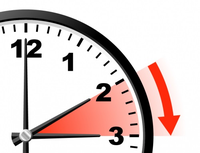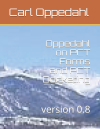(Update prompted by commenter Brooke: Yes the USPTO did what the Twenty-One Patent Practitioners asked. The did walk back the scary Federal Register notice. You can read about it here.)
On January 30, 2020 the USPTO published a Notice of Proposed Rulemaking to fix what it thinks is a problem with its Foreign Filing License rules, 37 CFR § 5.11 et seq.
The background to all of this is that in the spring of 2016, WIPO announced that soon its ePCT system would be available as a way to generate ZIP files for use in filing PCT applications in EFS-Web (at RO/US). Shortly after WIPO announced this imminent new feature of ePCT, on May 6, 2016 the USPTO published a Federal Register notice giving very scary warnings to patent practitioners about the use of the ePCT system to generate such ZIP files. The May 6, 2016 Federal Register notice had the unfortunate effect of scaring many US patent practitioners away from making any use at all of the ePCT system.
My best guess is that nobody will file any comment suggesting any change in the wording of the proposed rule change.
The main problem that needs fixing, I suggest, is not so much the wording of the FFL rules themselves, but rather the fact that this Federal Register notice dated May 6, 2016 has been dangling in front of US patent practitioners for more than three years now, continuing to give its very scary warnings about the use of the ePCT system in connection with filing PCT applications in EFS-Web. The main problem that needs fixing is that when the USPTO promulgates its new FFL rules some time after March 30, 2020, as it nearly surely will, USPTO needs to expressly walk back the May 6, 2016 Federal Register notice. The opportunity to do this will present itself when the USPTO publishes its Federal Register notice promulgating the Final Rule.
On February 8, a group of twenty-one patent practitioners filed a comment in this proceeding. You can see it here. A main point in that comment is to remind the USPTO of the need for this express walk-back of the May 6, 2016 FR notice.
A second point made in the comment is to urge the USPTO to make its procedure for updating of bibliographic data in pending US patent applications more user-friendly, for example along the lines of the Rule 92bis “action” in ePCT.
The comment period closes on March 30, 2020. My hope is that readers will file their own comments to the USPTO’s rulemaking proceeding, which you can do here. One easy way to comment, if you find yourself in agreement with the twenty-one patent practitioners, is simply to file a comment adopting the recommendations of that comment.



 Update: The book is now finalized and you can see it
Update: The book is now finalized and you can see it